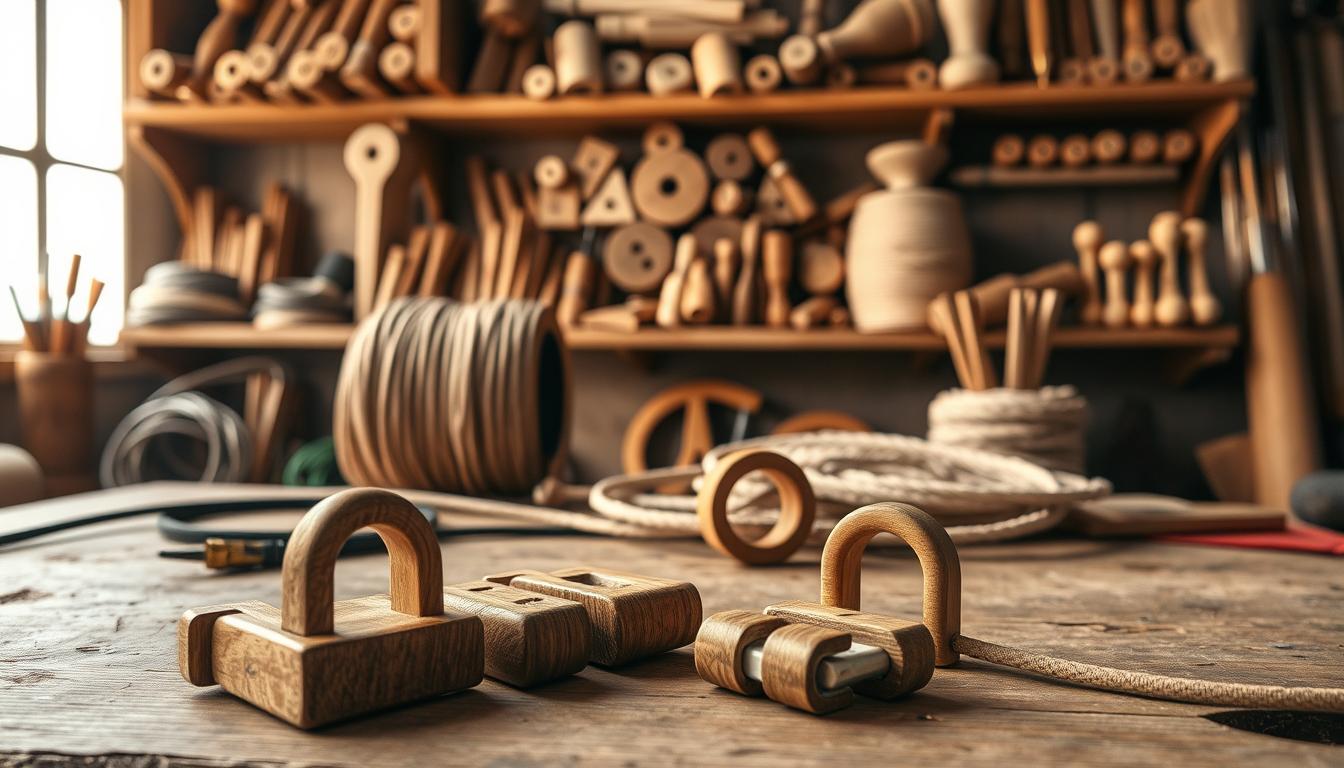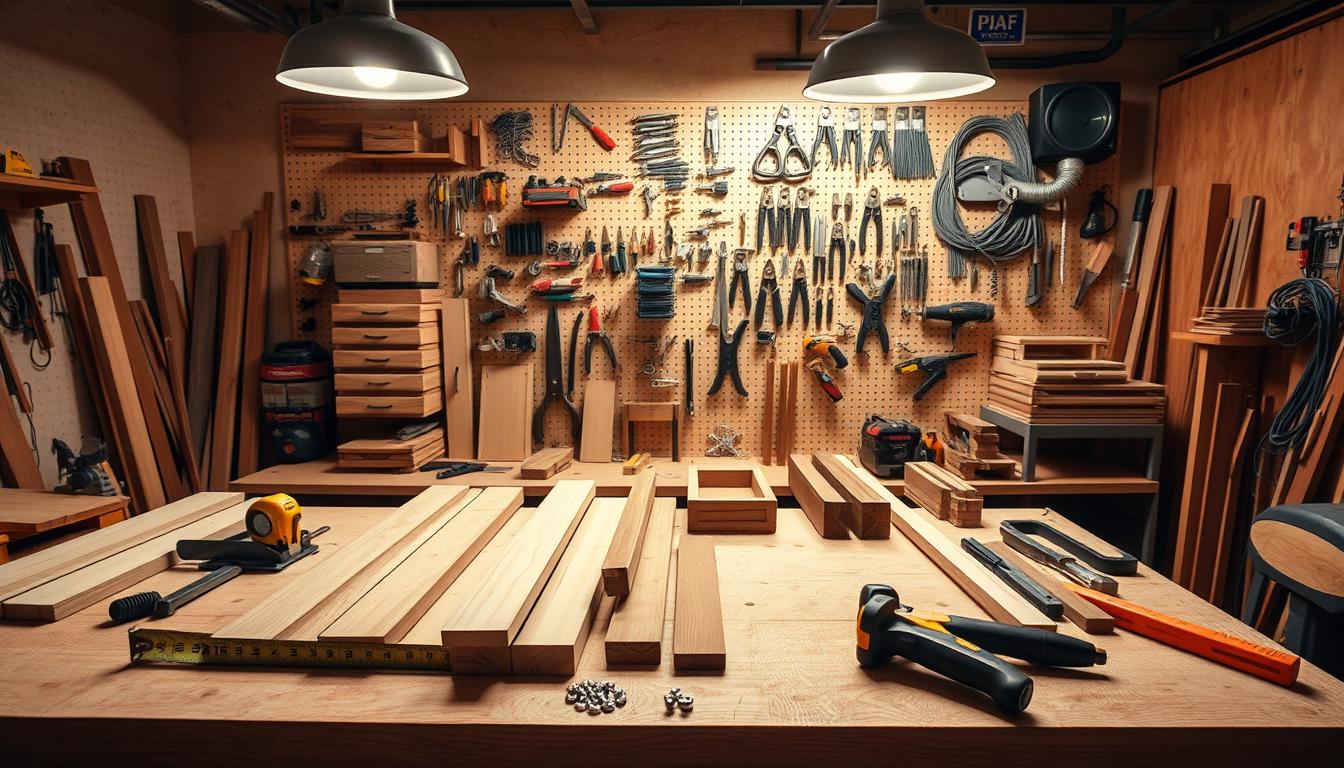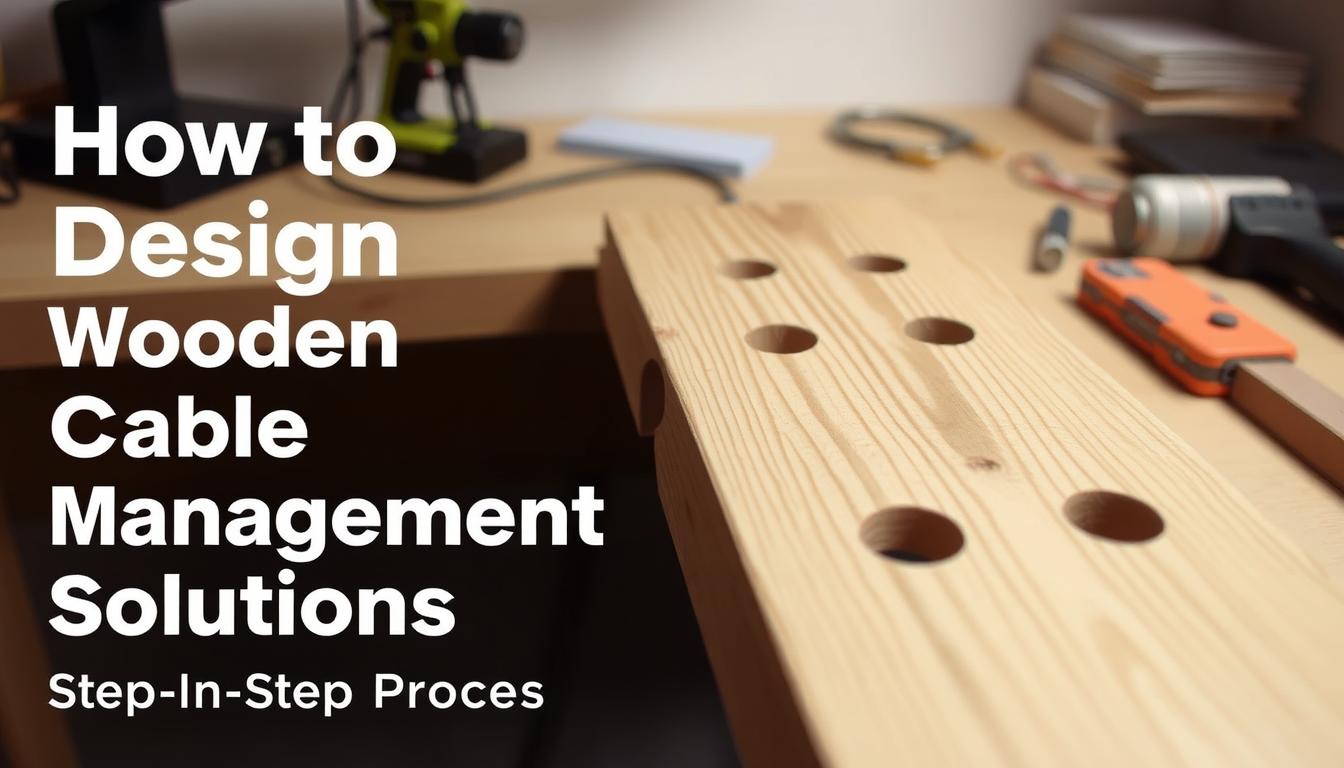Did you know that clutter from tangled wires can reduce productivity by up to 40%? A messy desk not only looks unappealing but also creates safety hazards. That’s where thoughtful organization comes into play. By crafting functional and stylish solutions, you can transform your workspace into a clean, efficient, and visually pleasing environment.
Creating controlled routes for your wires ensures they stay untangled and out of sight. This not only enhances the appearance of your desk but also makes it easier to access essential devices. With the right approach, you can achieve a balance between practicality and aesthetics.
This guide will walk you through the process of building solutions that fit seamlessly into your home or office. Whether you’re a DIY enthusiast or a beginner, you’ll find clear, step-by-step instructions to help you succeed. By the end, you’ll have a workspace that’s both functional and stylish.
Key Takeaways
- Organizing wires improves both safety and productivity.
- Controlled routes prevent tangles and enhance desk appearance.
- Wooden solutions add a stylish touch to your workspace.
- DIY projects can be tailored to fit your specific needs.
- Proper planning ensures a seamless and efficient setup.
Understanding the Basics of Wooden Cable Management
Tangled wires are more than just an eyesore—they’re a safety risk. A cluttered workspace can lead to accidents, reduce productivity, and create unnecessary stress. By organizing your cables, you can create a safer, more efficient environment.

Why Organized Cables Matter in Your Workspace
An organized desk setup is essential for maintaining focus and efficiency. Studies show that a tidy workspace can boost productivity by up to 40%. When cables are neatly tied and routed, you spend less time untangling them and more time on important tasks.
Safety is another critical factor. Over 25% of electrical fires are caused by faulty wiring or tangled cords. By keeping your cables organized, you reduce the risk of accidents and ensure a safer environment for your home or office.
Benefits of Wooden Solutions for Cable Management
Using wood for your cable management needs offers both practical and aesthetic advantages. Wood is durable, easy to work with, and adds a classic touch to any space. Whether you’re building a DIY box or using wooden ties, this material blends seamlessly into modern and traditional settings.
Wooden solutions are also customizable. You can design a box or organizer that fits your specific needs, ensuring every cable has its place. At the end of your project, you’ll have a functional and stylish addition to your workspace.
“A well-organized workspace is the foundation of productivity,” says a recent study on office efficiency. By investing time in creating a wooden cable management system, you’re not just improving your desk—you’re enhancing your entire workflow.
Materials and Tools for Your Cable Management Project
Starting your project with the right materials ensures a smooth and efficient process. Whether you’re crafting a box or organizing wires, having the correct items on hand is essential. This section outlines everything you need to create a functional and stylish solution for your workspace.

Essential Wood and Finishing Materials
Selecting the right piece of wood is crucial for durability and aesthetics. Mahogany, known for its strength and fine grain, is an excellent choice. A 1”x 6”x 6’ board provides ample material for most projects. Pair it with wood glue and nails for a secure build.
For finishing, consider a beeswax wood polish. It enhances the natural beauty of the wood while protecting its surface. This ensures your project not only functions well but also looks great in your home office.
Key Tools and Safety Gear
Precision is key, and the right tools make all the difference. A 1-1/4″ spade bit is ideal for creating clean cable holes. A router with a straight cutting bit helps smooth edges, ensuring a polished finish. For cutting, a band saw offers accuracy and control.
Safety should never be overlooked. Always wear goggles and a dust mask to protect yourself during work. Proper clamping techniques keep your materials in place, reducing the risk of accidents and messy setups.
By investing in quality tools and materials, you’ll create a solution that’s both functional and visually appealing. Preparation is the foundation of success, and with these items, your project will run smoothly from start to finish.
Planning Your DIY Wooden Cable Management Setup
Proper planning is the backbone of any successful DIY project. Before you pick up a tool, take time to sketch your idea and measure your materials. This ensures every cord and wire fits perfectly in your setup.

Sketching Your Design on Paper
Start by drawing your design on paper. This serves as your blueprint. Think about the length of each cord and where it will route. A 3D sketch helps visualize how everything will fit together.
Consider the power needs of your devices. Plan for extra space to avoid overcrowding. A clear design minimizes mistakes during construction.
Measuring and Marking Your Wooden Box
Accurate measurements are crucial. Use a tape measure and pencil to mark where holes will go. Ensure each wire has enough room to pass through without bending.
Here’s a quick guide to help you plan:
| Component | Measurement | Tool |
|---|---|---|
| Cord Holes | 1-inch diameter | Spade bit |
| Box Length | 12 inches | Tape measure |
| Wall Mount | 6 inches apart | Pencil |
Take your time during this stage. A well-documented plan ensures a smooth build process. “Measure twice, cut once” is a rule every DIYer should follow.
By focusing on every bit of detail, you’ll create a setup that’s both functional and visually appealing. This preparation is key to a successful project.
How to Design Wooden Cable Management Solutions: Step-by-Step Process
Every step in your project ensures a seamless and professional finish. From cutting to sanding, each phase requires precision and attention to detail. Follow this guide to create a solution that keeps your workspace tidy and efficient.

Constructing and Cutting Out Cable Holes
Start by securing your wooden box to your workbench using clamps. This ensures stability during the cutting process. Use a Dremel rotary tool with a cutting guide to create clean, precise holes for your cables.
Always wear safety goggles and a dust mask to protect yourself. Measure the diameter of each hole carefully to accommodate your cords without bending or damaging them. This step is crucial for a functional and organized setup.
Sanding, Finishing, and Ensuring Safety
Once the holes are cut, transition to sanding. Use an abrasive brush to smooth the edges, ensuring a polished finish. This not only enhances the appearance but also prevents splinters or rough surfaces.
Apply a beeswax wood polish to protect the surface and add a natural shine. This finishing touch ensures your organizer looks great on any table or floor. Finally, double-check the placement of each plug to avoid damage to your cords.
“A well-finished project is both functional and visually appealing,” says a professional woodworker. By following these steps, you’ll create a solution that enhances your workspace and keeps it clutter-free.
Enhancing Your Workspace with Creative DIY Solutions
Transform your workspace with creative DIY solutions that blend style and functionality. A well-organized desk not only boosts productivity but also reflects your personal taste. By incorporating thoughtful touches, you can create a space that’s both efficient and visually appealing.
Incorporating Accessories and Decorative Elements
Add personality to your setup with decorative accessories. Use cable trays beneath your desk to keep cords out of sight while maintaining easy access. Repurpose household items like binder clips or toilet paper rolls to create unique protectors for your wires.
Consider attaching adhesive clips along the edge of your desk or baseboards. These discreet solutions guide cables neatly, ensuring they stay organized. For a polished look, use colored sleeves or foam organizers to group cords together.
Additional Ideas for Home and Office Cable Management
Incorporate functional elements that enhance your space. Install under-desk baskets to store bulky items like power strips. Use zip ties or Velcro straps to bundle cables, making them easier to manage and reducing clutter.
For a minimalist approach, create a custom opening in your desk to route cables directly to your computer. This keeps everything tidy and prevents tripping hazards. Small changes like these can make a big difference in your workspace.
- Use cable trays or baskets to keep cords organized and out of sight.
- Repurpose items like binder clips or toilet paper rolls for unique protectors.
- Install adhesive clips to guide cables neatly along your desk or baseboards.
- Create custom openings in your desk for a clean, minimalist look.
- Bundle cables with zip ties or Velcro straps to reduce clutter.
By combining practicality with creativity, you can transform your workspace into a more efficient and visually pleasing environment. These simple projects not only solve common issues but also add a personal touch to your setup.
Conclusion
Organizing your workspace doesn’t just clear clutter—it transforms your productivity and safety. By following this guide, you’ve learned the importance of thoughtful planning, proper tools, and creative solutions. Look back at each step to ensure you’ve covered all aspects, from measuring materials to adding finishing touches.
Every option and accessory you’ve used contributes to a professional and efficient system. Whether it’s a floor desk or a desktop setup, these solutions keep your workspace tidy and functional. Always make sure to prioritize safety during the process to avoid accidents and ensure long-lasting results.
Continue exploring innovative ways to manage your setup. With a clean and organized space, you’ll enjoy improved focus, reduced stress, and a more professional environment. Your efforts will pay off in both productivity and aesthetics.
FAQ
Why is organizing cables important for your workspace?
Organized cables reduce clutter, improve safety, and enhance productivity. A tidy workspace also makes it easier to locate and manage cords efficiently.
What are the benefits of using wooden solutions for cable management?
Wooden solutions offer durability, aesthetic appeal, and customization options. They blend seamlessly with home or office decor while keeping cords out of sight.
What materials are essential for a wooden cable management project?
You’ll need wood planks, sandpaper, and finishing materials like varnish or paint. Ensure you have tools like a saw, drill, and measuring tape for precise construction.
What safety gear should you use during the project?
Wear safety goggles, gloves, and a dust mask to protect yourself while cutting, sanding, and finishing the wood.
How do you plan a DIY wooden cable management setup?
Start by sketching your design on paper, then measure and mark the wood to ensure accurate dimensions for your cable box or organizer.
What steps are involved in constructing a wooden cable management solution?
Cut out cable holes, sand the edges for smoothness, and apply a finish. Ensure all openings are safe and functional for cord placement.
How can you enhance your workspace with creative DIY solutions?
Add accessories like cable ties, wall mounts, or decorative elements. Consider integrating power strips or cord protectors for added functionality.
What are some additional ideas for managing cables at home or in the office?
Use under-desk organizers, floor cable boxes, or wall-mounted trays. These options keep cords tidy and free up valuable space.


